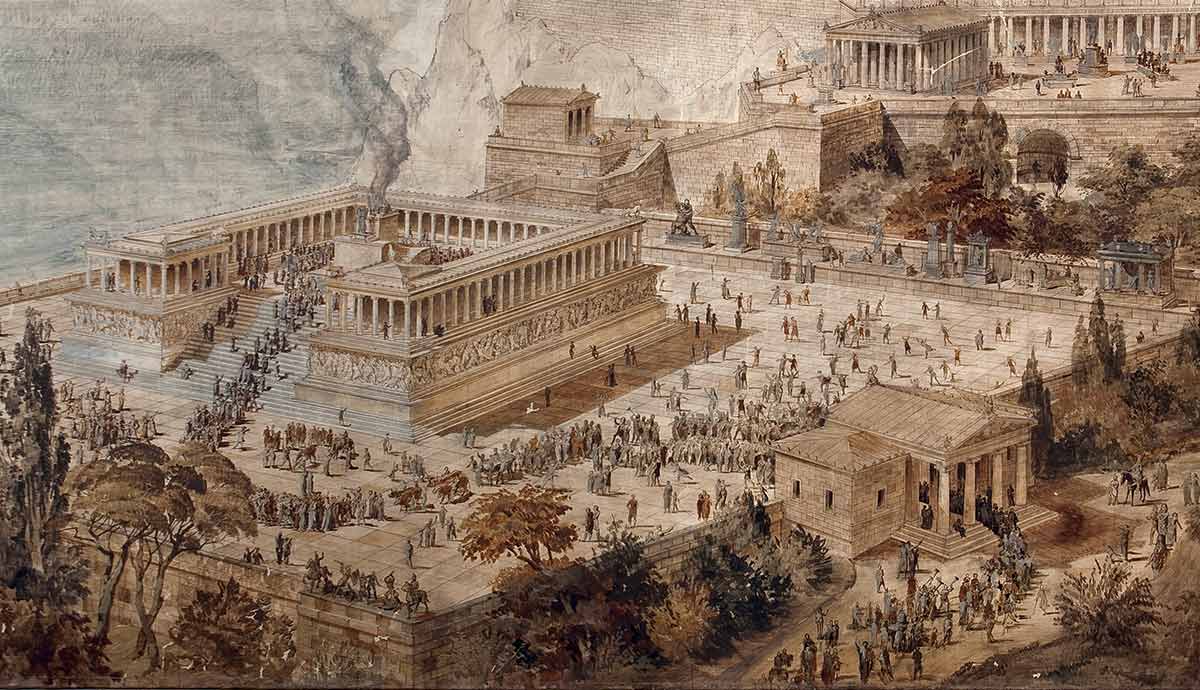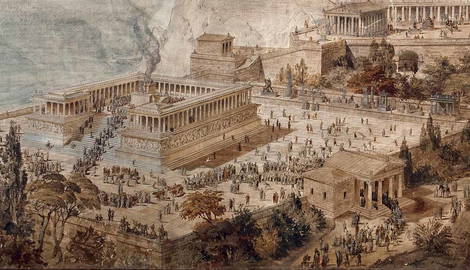
The Hellenistic cities were one of the most visible legacies of Alexander the Great’s legendary conquest. Alexander’s massive Empire collapsed soon after the young ruler’s death. However, the Hellenistic World outlived Alexander, becoming his lasting legacy. And its most recognizable feature was the city. Inspired by the classical Greek polis, all of the towns had a similar plan and the same set of public buildings: the city council (boule), colonnaded walkways (stoa) surrounding a public square (agora), temples, theaters, libraries, and gymnasia.
The streets and squares were filled with monuments, statues and inscriptions, celebrating the achievements of wealthy patrons — rulers and prominent city members. As centers of culture, trade and politics, the cities for centuries acted as a prime movers in creating and spreading the unified Hellenistic culture, which left a lasting mark on a vast area stretching from the Eastern Mediterranean to the Himalayas. Their importance was so great that once the Roman Empire took this area, the Hellenistic cities retained their importance and rights under the new regime.
Alexandria ad Aegyptum – The City of Alexander the Great

Located on the shores of the Mediterranean, in the Nile delta, Alexandria ad Aegyptum (Alexandria by Egypt) was the greatest of all Hellenistic cities. Founded by Alexander the Great in 331 BC, Alexandria became the capital of the powerful Ptolemaic Kingdom. By the 2nd century BC, Alexandria grew into a cosmopolitan metropolis of 300.000 people. Its famed Library attracted scholars, philosophers, scientists, and artists from all over the Hellenistic World, turning the city into a cultural and intellectual powerhouse. In addition, Alexandria was renowned for its magnificent buildings, including the lavish tomb of its founder, the Royal Palace, the giant causeway (and breakwater) the Heptastadion, and most importantly, the majestic Lighthouse of Pharos. Even after the Roman annexation in 30 BC, Alexandria retained its importance, second only to Rome.
Antioch ad Orontes – The Jewel of the East

Soon after Alexander the Great’s death, his vast empire fell apart. In 301 BC, one of Alexander’s diadochi, Seleucus I Nicator (Victor), founded a new city at the bank of the Orontes in the fertile valley near the Mediterranean Sea. Soon, Antioch became the western capital of the vast Seleucid Empire. Antioch’s wealth originated from its strategic location at the west terminus of the Silk Road, a major trade route linking distant China with the Eastern Mediterranean. Like Alexandria, Antioch was a cosmopolitan metropolis, attracting people from all corners of the Hellenistic world.
It was also a city noted for its luxurious living, reflected in the magnificent mosaics and remains of the opulent villas. The fashionable suburb of Daphne, built halfway between the city and its port, became a favorite retreat for the wealthy and powerful, both in the Seleucid, and later, in the Roman period. The Daphne parks hosted the great temple of Pythian Apollo, one of the major centers of pilgrimage.
Seleucia – The Heart of the Empire

The Seleucid Empire was the largest of all Hellenistic kingdoms, stretching at its height from Asia Minor and the eastern Mediterranean coast all the way to India. Right amid the vast territory was Mesopotamia, and in its center, on the banks of the Tigris, was Seleucia. Another foundation of Seleucus I, Seleucia was one of the largest Hellenistic cities. At its height, during the second century BCE, the city and its immediate surroundings supported over half a million people. Seleucia was also an important center of trade, culture and government. The great city on the Tigris benefited from its optimal location in the middle of the Silk Road, the famed trade route of the ancient world. However, following the collapse of the Seleucid Empire, Seleucia’s role decreased. Eventually, the city of Seleucus became part of Ctesiphon, the capital of the Parthian Empire.
Ephesus – The Gem of Asia Minor

Unlike the Hellenistic cities founded by the heirs of Alexander, we can trace the history of Ephesus and Pergamon back to the classical Greek period. After all, Ephesus was home to the Great Temple of Artemis, one of the Seven Wonders of the Ancient World. During the Hellenistic period, the city had to be moved two kilometers inland to its present-day location due to the silting of the old port and the emergence of unhealthy marshland. Most of its famous monumental architecture, however, comes from the Roman period, when Ephesus became one of the most important cities in the Empire.
Pergamon – The Hellenistic City That Replaced Athens

For the first time mentioned by Xenophon as one of the locations of the March of Ten Thousand, Pergamon (or Pergamum) rose to prominence as the capital of the Attalid dynasty. The Attalids wanted to create a second Athens, a cultural and intellectual hub of the ancient Hellenistic world. The Acropolis of Athens inspired Pergamon’s Acropolis, and the Library of Pergamon was second only to the Library of Alexandria. Pergamon continued to be an important center of Asia Minor during the Roman period, especially under philhellene emperor Hadrian, who commissioned an ambitious building programme: massive temples, a stadium, a huge forum, a theatre and an amphitheatre.










